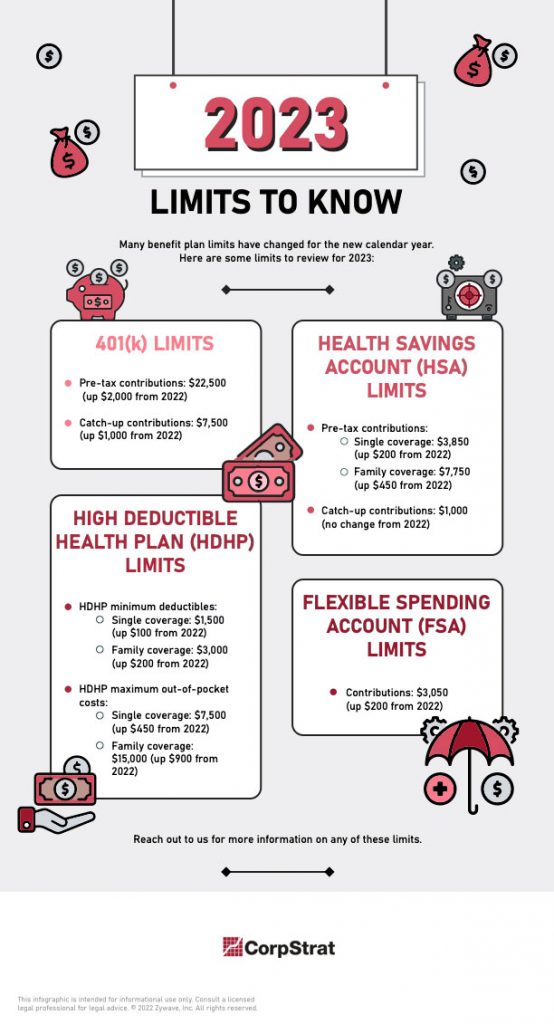Many employee benefits are subject to annual dollar limits that are adjusted for inflation by the IRS each year. The following commonly offered Employee Benefits are subject to these limits:
- High deductible health plans (HDHPs) and health savings accounts (HSAs)
- Health flexible spending accounts (FSAs)
- 401(k) plans
- Transportation fringe benefit plans.
DOWNLOAD OUR FREE PDF DETAILING 2023 LIMIT INCREASES:
The IRS typically announces the dollar limits that will apply for the next calendar year well before the beginning of that year. This gives employers time to update their plan designs and make sure their plan administration is consistent with the new limits.
This Compliance Overview includes a chart of the inflation-adjusted limits for 2023. Due to high rates of inflation, all of these limits will substantially increase for 2023. Note that there are some benefit limits that are not indexed for inflation, such as the dependent care FSA limit and the catch-up contribution limit for HSAs.

Increased Limits
- HSA contributions
- HDHP limits for minimum deductibles and out-of-pocket maximums
- Health FSA pre-tax contribution limit
- Health FSA carryover limit
- Monthly limits for transportation fringe benefit plans
- Employees’ elective deferrals to 401(k) plans, pre-tax and Roth
- Tax exclusion for adoption assistance benefits
Unchanged Limits
The following limits stay the same from year to year because they are not indexed for inflation:
- Tax exclusion for dependent care FSA benefits
- Catch-up contributions to an HSA
LINKS AND RESOURCES
- IRS Revenue Procedure 2022-24: 2023 limits for HSAs and HDHPs
- IRS Notice 2022-55: 2023 limits for retirement plans
- IRS Revenue Procedure 2022-33: 2023 limits for health FSAs, adoption assistance and transportation fringe benefits
DOWNLOAD OUR FREE PDF DETAILING 2023 LIMIT INCREASES
In connection with the increased limits for 2023, employers should review and revise participant communications and election forms, amend plan documents and summary plan descriptions, and update all payroll and/or human resources systems with the new dollar amount limitations.




